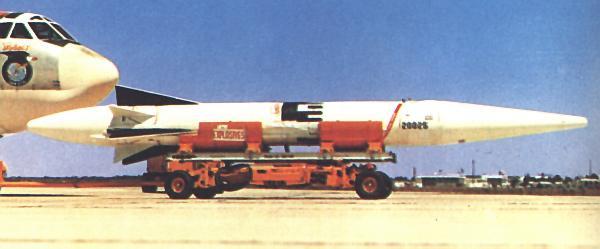
The program to equip the Royal Australian Navy with nuclear submarines is in trouble. The takeaway: Australia must begin thinking now about what to do to avoid program failure.
Why has this situation arisen? First, the prospective program costs are enormous and have been badly underestimated. Second, industrial capacity is inadequate for the tasks of building and supporting a nuclear fleet. Third, the program lacks a powerful leader and an effective management plan to drive it forward.
And, strategically, the planned force of eight nuclear attack submarines (SSNs) armed with only conventional weapons would have minimal deterrent value on Chinese perceptions.
Building the submarines is Pillar 1 of AUKUS, the security partnership of Australia, Britain and the United States. Pillar 2 consists of other technology exchanges among them. It is in Pillar 2 that AUKUS may prove itself.
The United States is to supply three Virginia-class SSNs to Australia—two from the US fleet, which will have to be topped up with newly built vessels, and one straight from a shipyard. Australia has the option to seek to acquire a fourth and fifth Virginia. Britain is to design, in coordination with its partners, a new class, SSN-AUKUS, for the Royal Navy and Royal Australian Navy. The Australians are due to build units of that class to reach a total fleet of eight SSNs by the mid-2050s .
But here is the first constraint. How long does it take to build a new Virginia-class submarine? According to the Congressional Budget Office, the answer is nine years, due to supply chain limitations. Huntington-Ingalls Industries (HII) in Newport News, Virginia, cannot now build enough SSNs for the US Navy. How will it find capacity to build even more to cover acquisitions by Australia?
As well as competing for nuclear talent with General Dynamics, which is constructing the Navy’s top-priority Columbia-class nuclear ballistic-missile submarines (SSBNs), HII is building nuclear aircraft carriers. Delays to delivery of the carrier USS Enterprise illustrate the lack of skilled workers for all the required nuclear construction. And the question of huge cost overruns in the Australian SSN program may not have been fully considered.
The first Columbia class boat will cost about $20 billion. Follow-ons are estimated at lower costs. However, the entire nuclear infrastructure is inordinately expensive. Australia must start from scratch. And, as Britain will rediscover, a new SSN class is almost certain to experience large cost overruns.
Maintenance, repairs, logistics, training and recruiting to maintain a nuclear navy are not cheap. While Australia will benefit from using US and British facilities, that will not significantly offset the costs. Plans to deal with these and other challenges are not fully mature.
The question of who is in overall charge is difficult to answer. There is no czar like Admiral Hyman Rickover, who ruled the US nuclear submarine program for decades with absolute authority. Nor is there a Vice Admiral William (‘Red’) Raborn, who did the same for the US Polaris SSBN program.
It is unclear that these obstacles have been fully digested in an overall plan for completing AUKUS Pillar 1. One practical outcome could be—and emphasis is on ‘could be’—the US selling one or two more older Virginias to Australia as an option.
Those who are more optimistic should think about Skybolt.
In the early 1960s, the US was contracted to build an air-launched ballistic missile as the centerpiece of Britain’s strategic nuclear deterrent. But the concept proved too difficult to engineer, and Skybolt was cancelled, leaving Britain scrambling to find a new way of sustaining its deterrent. Will AUKUS suffer the same fate?
Where AUKUS is invaluable however is in Pillar 2 and the technology exchanges that it covers. If managed and executed correctly, the leverage here is potentially enormous. However, matters of intellectual property, classification and trust are critical. Once these other issues are resolved, adding Canada and New Zealand (the two other Five Eyes members) as well as Asian partners may be wise.
What needs to be done? Without casting fundamental doubts on AUKUS, discrete thinking must start now to address these potentially program-killing issues. A Plan B that raises alternatives must be developed. These must include, if China is indeed perceived as a possibly existential threat, the option of Australian nuclear weapons.
Ironically, in retrospect, a better choice may have been building diesel submarines with long-range strike missiles and air-independent propulsion for extended underwater loitering. But that is no longer re-negotiable.
The crucial question is this: what impact will eight nuclear submarines, if they can be built and delivered, have on China? Unless nuclear weapons are to be carried, the effect will not be significant. And huge impediments threaten development and construction of the nuclear boats.
What is needed now is a plan to save as much of Pillar 1 of AUKUS as possible and to save Pillar 2 at all costs. This is a grim situation that must be confronted now. Otherwise, the spectre of another Skybolt disaster looms large.